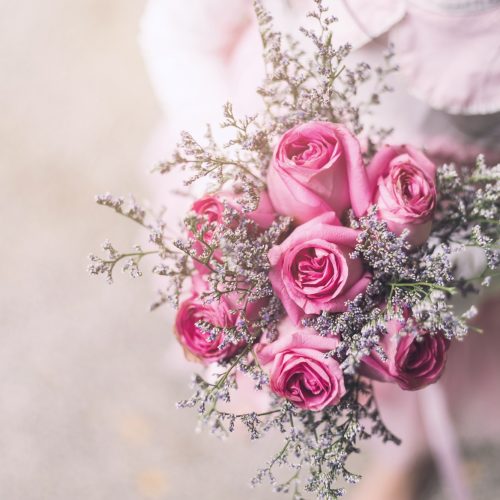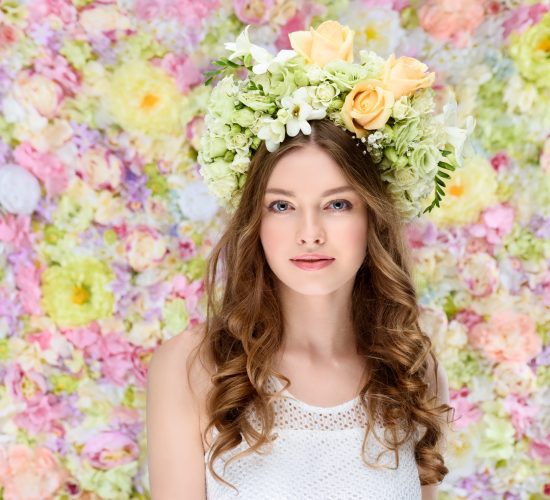Should You Match the Bouquet with the Boutonniere?
- Home
- Blog
- Flower & Deco
- Should You Match the Bouquet with the Boutonniere?
Why Is Matching Wedding Flowers a Common Tradition?
Oh man, you know, matching the bouquet and boutonniere at weddings is one of those traditions that’s like been around forever. It’s kinda like symbolizing unity, ya know, and it gives this visual harmony between, like, the couple. So, in most weddings, the bride’s the one carrying the bouquet, and the groom or like their partner’s typically rocking the boutonniere. These little floral details, they tie both parties together in this sweet, matching kinda way. But, guess what? While tradition is, like, a nice starting spot, modern weddings nowadays are all about, like, flexibility and putting your own spin on things.
Do the Bouquet and Boutonniere Have to Look Identical?
Nah, not really. They don’t gotta look like twins or anything! I mean, they should feel cohesive though. It’s like what folks say—complement don’t copy, ya know? If you’ve got this bridal bouquet with lush peonies and roses, maybe your partner’s boutonniere could vibe with that style by using a single rosebud or a sprig from the bouquet’s greenery. Matching’s not just about creating, like, exact replicas. It could be through color, flower type, or even texture. What really counts is if they feel kinda connected as part of the overall floral plan, I guess

What Are the Best Flowers to Use for Boutonnieres?
Oh, okay, so boutonnieres, they’re small, and not every flower is gonna work best. You want hardy, structured flowers, ’cause they’ll be worn on clothing, movin’ around, and dealing with heat, right? So, here’s whatcha got for popular boutonniere picks:
Roses: They’re classic, romantic, and hold up really well, plus they’re pretty easy to match with most bouquet styles.
Ranunculus: These are featherweight and have this layered look that’s kinda like peonies.
Calla Lilies: Sleek and elegant, great for formal shindigs.
Carnations: Totally budget-friendly, sturdy, and you can get ’em in all sorts of colors.
Orchids: Super for tropical or modern weddings with like, an exotic twist.
Which Flowers Work Best for Bouquets?
Okay, so bouquets, they have more room for variety, especially with regarding to seasonal blooms. Here’s an quick breakdown of flowers by season:
Spring:
– Peonies
– Tulips
– Daffodils
– Sweet peas
– Anemones
Summer:
– Garden roses
– Dahlias
– Sunflowers
– Hydrangeas
– Lisianthus
Fall:
– Chrysanthemums
– Marigolds
– Calla lilies
– Zinnias
– Amaranthus
Winter:
– Camellias
– White roses
– Evergreens
– Berries
– Dusty miller


Matching the boutonniere to a flower that’s already in the bouquet makes coordination way easier and keeps those costs in check, especially if you’re dealin’ with seasonal blooms.
How Do Seasons Impact Wedding Flower Choices?
So, like, the seasons can totally mess with both the look and price of your wedding flowers. For instance, peonies are adored, but they’re only hangin’ around in late spring to early summer.
If you’re going for a winter wedding, using outta-season blooms might mean you’re paying more and relying less on nature.
Instead, try designing your bouquet and boutonniere around what’s blooming during your wedding month. This way, it doesn’t just make your floral picks more affordable but also ensures they are fresh and vibrant.
Here are some seasonal pairing examples, just to give ya an idea:
Spring wedding: A pastel peony bouquet with a boutonniere made from a single ranunculus and baby’s breath.
Summer wedding: A lively bouquet with sunflowers and dahlias, paired with a boutonniere of yellow dahlia and greenery.
Fall wedding: A rich-toned bouquet with marigolds and burgundy mums, matched to a boutonniere with a single chrysanthemum and fall leaves.
Winter wedding: A cool-toned bouquet of dusty miller, white roses, and berries, with a boutonniere made of evergreen sprigs and a white rosebud.

Can Color Be the Unifying Element Instead?
Oh, yeah, totally! Color coordination is, like, one of the simplest ways to bring the bouquet and boutonniere together. Say, if your bouquet has shades of blush and ivory, then the boutonniere could totally rock a blush rose or white ranunculus with a matching ribbon tie or sumpin’.
While pickin’ colors, think about the overall palette of the weddin’. Neutral tones like ivory, white, soft pinks, and greens? Yeah, they’re always timeless. But bold shades, like burgundy, navy, or fuchsia, can add a dramatic flair, especially in boutonniere accents.
What About Texture and Greenery?
Texture is one of those things, man, folks often forget about, but it’s a really powerful way to create unity. Matching the greenery between the bouquet and boutonniere? It’s subtle yet very effective. You could use similar foliage like eucalyptus, olive branches, ruscus, or ferns to tie both designs together.
For example, a bouquet with silver dollar eucalyptus fits right in when the boutonniere has that same leafy sprig. Texture also comes from mixin’ structured flowers with softer stuff like feathers, berries, or dried accents.
Should the Wedding Party Also Coordinate?
Yeah, prob’ly a good idea. While the couple’s flowers are obviously the main show, extending that floral style across the bridal party creates this polished, intentional look.
Bridesmaids’ bouquets can be like mini-versions of the main bouquet, using similar flowers or colors.
Groomsmen’s boutonnieres?
They can include a matching flower or simply keep the color scheme goin’ with coordinating ribbons or greenery.
Just remember, the wedding party’s flowers don’t need to be as elaborate as the couple’s. A simplified version ensures that the main floral elements still stand out.
What Are Some Modern Alternatives?
So, if yer up for breaking tradition, there’s a bunch of creative directions you can take with wedding flowers. Some folks choose non-floral boutonnieres made of fabric, dried herbs, or even small pins with sentimental meaning. Others like the idea of bouquets made from dried flowers or silk versions that can become keepsakes later on.
For same-sex couples or non-traditional weddings, both partners can wear boutonnieres, carry bouquets, or go for a mix and match approach. What’s seriously key is that your floral choices mirror your personality and style.
How Can You Keep Flowers Fresh on the Wedding Day?
Freshness is major, especially since
get used a lot in outdoor photos and worn all day. Here’s a few quick tips to help out:
Keep them in a cool, dark place before the ceremony.
Have your florist deliver flowers as late as possible.
Boutonnieres? Use water tubes when storing.
Give the bouquet a light mist of water if needed.
Really, seasonal blooms tend to last longer and look fresher throughout the day, especially if you’re planning a summer or outdoor wedding.
Conclusion: Should You Match the Bouquet with the Boutonniere?
Matching your bouquet and boutonniere is less about rules and more about balance, style, and personal expression, right? Whether you go by flower, color, texture, or decide on some unique twist, the most important thing, I think, is that yer wedding flowers feel thought-out and seasonally appropriate. Letting the season guide your floral choices, keeping the conversation open with your florist, and creating a look that tells your love story, that’s where it’s all at.
Whether you’re set on a spring garden wedding or a cozy winter ceremony, thoughtful coordination of your bouquet and boutonniere can seriously elevate the whole vibe of your big day.
For any queries related to Event Decor Services reach out to our experienced professionals at VNV Events.
